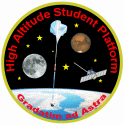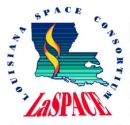



Payload 07 Information
Payload Flight Number:
Institution:
Payload Title:
Measurement of the ozone profile in the stratosphere using nanocrystalline and nanocomposite sensor arrays on a high altitude balloon platform.
Student Leader:
Faculty Advisor:
Payload class:
SMALL
Payload ID Number:
07
Mass:
2 kg
Current:
0.5A
Serial Downlink:
2400
Analog Downlink:
none
Serial Commands:
none
Discrete Commands:
none
Payload Specification & Integration Plan
Due: 06/01/2010
Delivered: 06/03/2010
Payload Integration Certification
Scheduled: 08/06/2010
Actual:
Flight Operation Plan
Due: 08/01/2010
Delivered:
Final Flight / Science Report
Due: 12/17/2010
Delivered:
Abstract:
The UND and UNF team have successfully flown payloads on both the HASP 2008 and 2009 balloon flights for the purpose of measuring the ozone gas profile in the stratosphere. The anocrystalline ITO thin film gas sensor array developed by UNF was used for the detection of the ozone gas profile, while the signal conditioning and microcontroller circuits developed by the UND team were used in the ozone sensor payload. Based on the success and the few known problems of these payloads, the UND-UNF team proposes a HASP 2010 flight for the erification of earlier data using improved versions of the sensors and payload. Three different groups of ozone sensor arrays: (i) nanocrystalline ITO sensors, (ii) nanocomposite organic-ITO gas sensors on glass substrates and (iii) nanocomposite inorganic-ITO gas sensors on glass substrates will be used for the comparison of sensitivity, speed of response and stability of the sensors. Recently, the UNF team invented nanocomposite ITO gas sensor arrays, which show better sensitivity than that of ITO sensors on glass. Both groups of ITO sensors for ozone will operate at temperature about 30C and need no high temperature heater, unlike other metal oxide sensors, which may conserve electrical power. In addition, several bugs in the electronics circuits and software of the last year's payload will be corrected. An improved version of the payload will be integrated and tested by the "Cross-Check and Verification" approach. First, UNF sensors will be calibrated with ozone gas at UNF, and then at UND labs for cross verification. Then, UNF sensors will be integrated into the UND electronics package to complete the payload. Finally, the completed payload will be tested first at UND and then at UNF. Both teams will jointly analyze the data after the flight. Furthermore, the surface topography of the sensors before and after the flight will be studied using a scanning electron microscope, and the chemical composition of the surface of the sensors will be analyzed by energy dispersive analysis of x-rays at UNF. This student project continues through the Dakota Space Society student organization, with support from both the North Dakota and Florida Space Grant Consortia. |